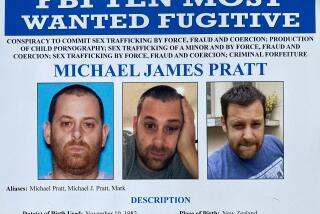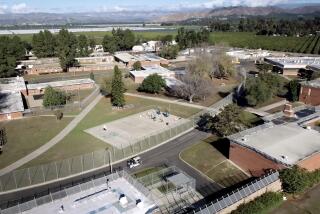Sex-trafficking sting highlights vulnerability of foster children

WASHINGTON — More than 100 sexually exploited teenagers, some as young as 13, were rescued during a nationwide sex-trafficking sting over the weekend, the FBI announced Monday.
The three-day sweep of 76 cities focused on underage victims of prostitution. The FBI said 105 teens — nearly all of them girls — were rescued, and 150 people suspected of being pimps were arrested.
The largest raid was in the San Francisco area, where officers said they rescued 12 juveniles and arrested 17 pimps. In the Los Angeles area, two juveniles were recovered and three people arrested.
The raids, carried out by nearly 4,000 local, state and federal officers, brought renewed attention to the vulnerabilities of foster children, who are disproportionately targeted and recruited by child sex traffickers, sometimes right out of the foster care system.
According to the National Center for Missing and Exploited Children, the information clearinghouse that tracks missing child reports in the United States, 60% of runaways who are victims of sex trafficking had been in the custody of social services or in foster care.
The center assisted the FBI in the weekend raids, part of the agencies’ Innocence Lost Initiative that the FBI says has rescued more than 2,700 sexually exploited children since 2003.
“We are finding a very disturbing trend,” John Ryan, the center’s chief executive, said at a news conference at FBI headquarters. “They leave foster care and they literally fall off the radar. That’s something that needs to be addressed.”
The circumstances that put minors into foster care are often what make them especially vulnerable to sex trafficking, said Staca Shehan, director of the center’s case analysis division.
“These kids are usually without an involved parent,” she said in a telephone interview. “Pimps can come into their life and initially take on the role of protector.”
Without families to work on their behalf, Shehan added, it is more difficult to rescue foster youths from sex trafficking and keep them out of the cycle. Victims of sex trafficking might be returned to a group home only to begin recruiting their friends into the sex trade, she said.
That is the concern of CAS Research and Education, a Sacramento-based nonprofit group that combats human trafficking. The organization was spun out of California Against Slavery, co-sponsor of Proposition 35, the anti-sex-trafficking measure California voters passed in November.
Half of sexually trafficked minors in California come from the foster care system. By comparison, fewer than 1% of all children in California are foster children.
The Sacramento group is one of several in the state working to find families that will adopt youths who have been rescued from sex trafficking or are vulnerable to being recruited.
Changing vulnerabilities inherent in the foster care system is difficult, said Rosario Dowling, program director for the Sacramento group’s northern district. “We need to recruit healthy, specialized, viable families” to give the children a place to belong, she said.
More to Read
Start your day right
Sign up for Essential California for news, features and recommendations from the L.A. Times and beyond in your inbox six days a week.
You may occasionally receive promotional content from the Los Angeles Times.






